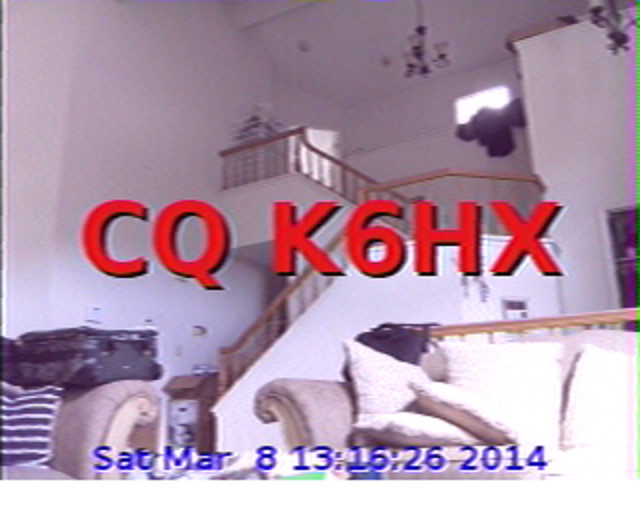SSTV travels through the Ether! A minor success!
So, this morning I played around a bit more with my Raspberry Pi code to try to see if I could make an SSTV beacon. The idea was to use two existing bits of code, raspistill and my own SSTV encoder (robot36), and glue them together with a small bit of Python. The code uses raspistill to snap a 320×240 image, a bit of the Python Imaging Library to add some text, then my own robot36 encoder to convert that to a sound file. The Pi would then play the sound file, which would be piped into my $17 BF-888S transmitter, which was set into VOX mode, which means that when it hears a signal, it begins to transmit. For this test, I used it in the low power setting, transmitting on the 70cm calling frequency.
To receive, I fired up my trusty FT-817, which was then piped into my Windows laptop running the classic MMSSTV software. At first, I tried using the laptop mic to just listen to the sound played on the 817, but the results were less than stellar. I finally found the right cable to do a direct connect, set the levels appropriately, and voila (I doubled the image size for easier viewing):
Not bad! Total distance: maybe 35 feet or so (blocked by two walls). After I was done, I realized that I actually don’t have an antenna hooked to my FT-817, so I suspect much greater ranges are capable. The BF-888S is basically operating as an FRS radio here (in fact, the BF-888S can be programmed to act operate on FRS frequencies) so even if you don’t have an amateur radio license, you could probably build a similar setup without a lot of hassle.
Fun.

I recall burning three or four weeks of a sabbatical getting Saccade.com on the air with Wordpress. So much tweaking…